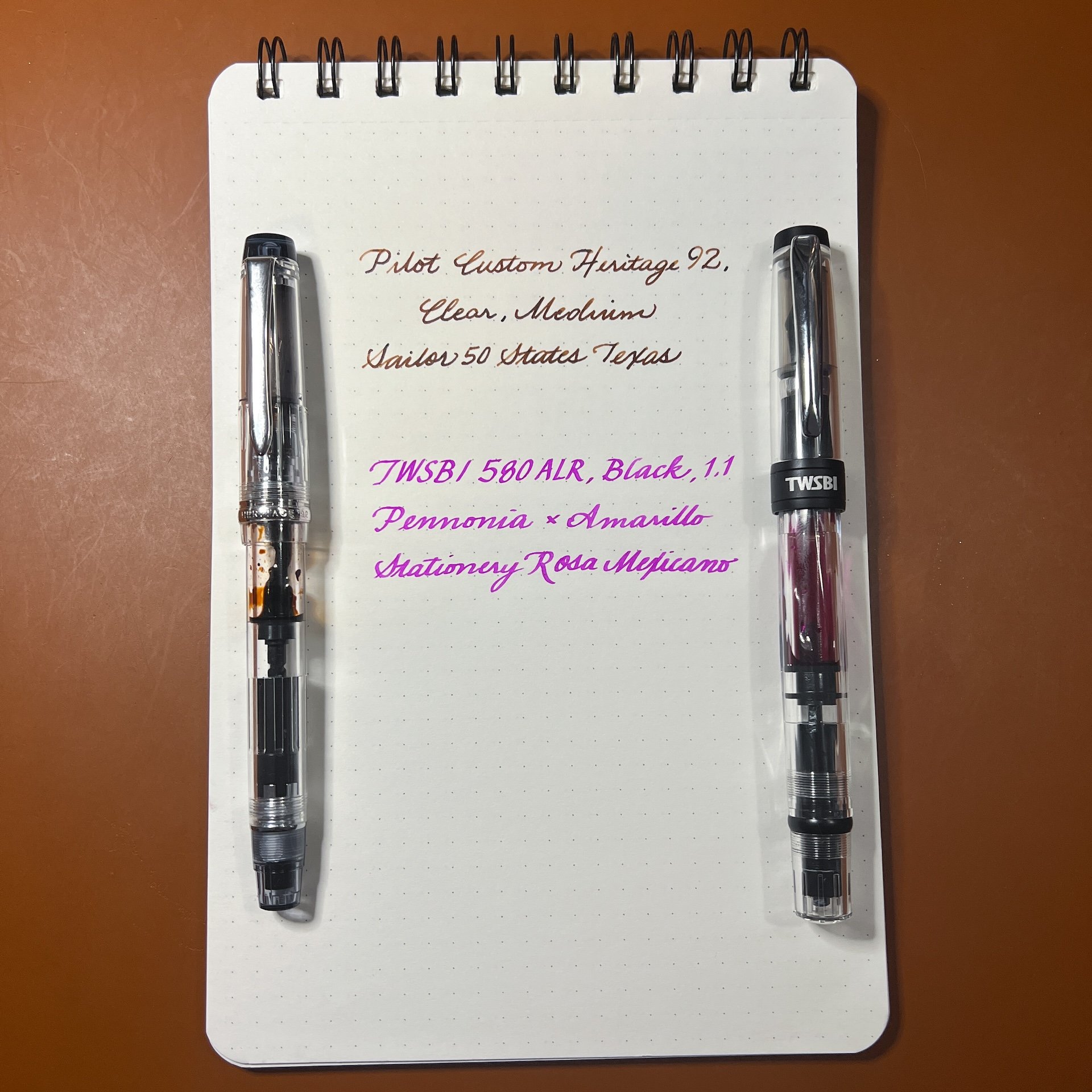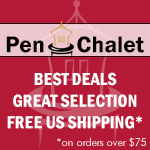(Sarah Read is an author, editor, yarn artist, and pen/paper/ink addict. You can find more about her at her website and on Twitter. And her latest book, The Atropine Tree, is now available!)
So, what did you get for back-to-school supplies this year? While I'm not in school anymore, I still had to shop for my kids. I can't walk past those aisles of pretty pens and paper and not indulge a little bit. The kids got their list items, and oops, a pack of Pilot Precise V7 pens in this limited-edition color set fell into my cart.
I usually prefer a finer point on my pens, with .5mm being the thickest I generally like, but these colors looked too fun to pass up, and I'm glad I didn't. This set comes in Periwinkle, Emerald, Lilac, Cherry, Salmon, and Honey Yellow, in addition to the standard red, black, and blue. It's supposed to be a relaxation-inspired palette, but it has a 1970s vibe and reminds me a lot of old Fiestaware dishes. The colors are well pigmented and vibrant, so they're easy to read--even the yellow. The wider tips actually help with the enjoyment of the colors in the same way that a broad fountain pen nib helps show off ink properties.
When I think about it, these pens were what I was using in college before I switched to fountain pens. Something about the smooth writing of the liquid ink was kind of a gateway drug to fountain pens. Which explains a lot about why I like to use these when I can't use my fountain pens.
The construction of these pens hasn't really changed since way back in the ancient times when I was actually a student. But there's no need to change them. They're great as they are. One of my favorite features of the construction is the ink window, which shows how much of the liquid ink is left. I remember watching it slosh back and forth like a lava lamp as a bored student. The needlenose tip of the pen is also great for writing. It allows a clear view of your lines, which is great for ... precision. Hence, the name.
The snap cap has a metal clip and it posts securely--all handy features in a workhorse everyday pen. The slim body of the pen also allows it to fit into narrower pen holders.
This is essentially the perfect office pen. It's not fancy enough to worry about it wandering off, but it's a big step up from the random-brand ballpoints that usually circulate. It has a large ink capacity, writes reliably, and comes in enough colors to color code even the most complex meeting notes. This set has been put to hard work mapping out my next quarterly schedule. It's a good thing this came with three different shades of red.
The Pilot Precise line is one most folks are familiar with, even if they aren't "pen people." Even people who think they don't care about pens will admit that they prefer these.
I paid about $15 for this set at our local Meijer, which was a sale price for the back-to-school specials. Regular price has them running about $2 per pen, which is an average price for what is, I believe, an above average pen. Now they just need to release a few more shades of red and I'll be able to write out my to-do list. At least I can cross back-to-school shopping off of it.
Enjoy reading The Pen Addict? Then consider becoming a member to receive additional weekly content, giveaways, and discounts in The Pen Addict shop. Plus, you support me and the site directly, for which I am very grateful.
Membership starts at just $5/month, with a discounted annual option available. To find out more about membership click here and join us!










































